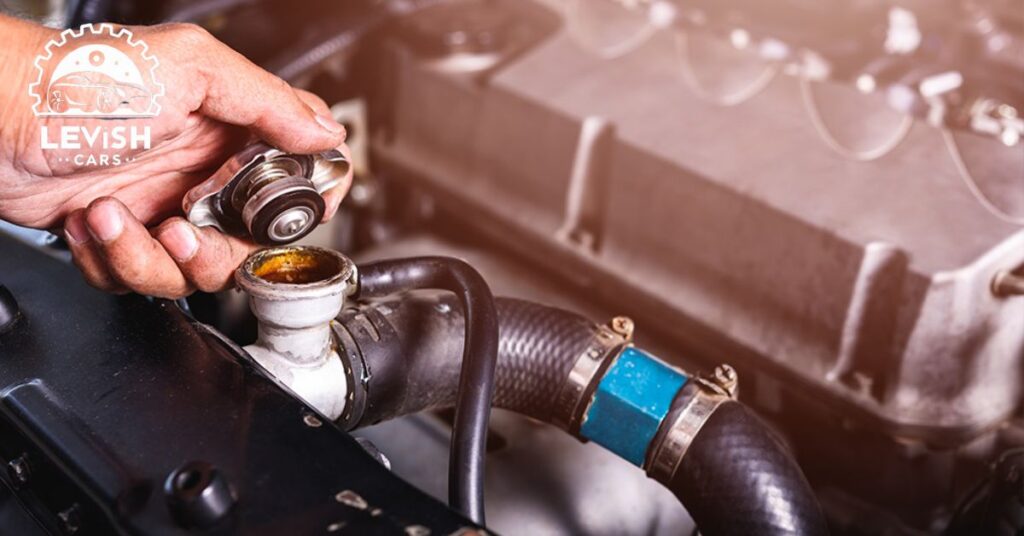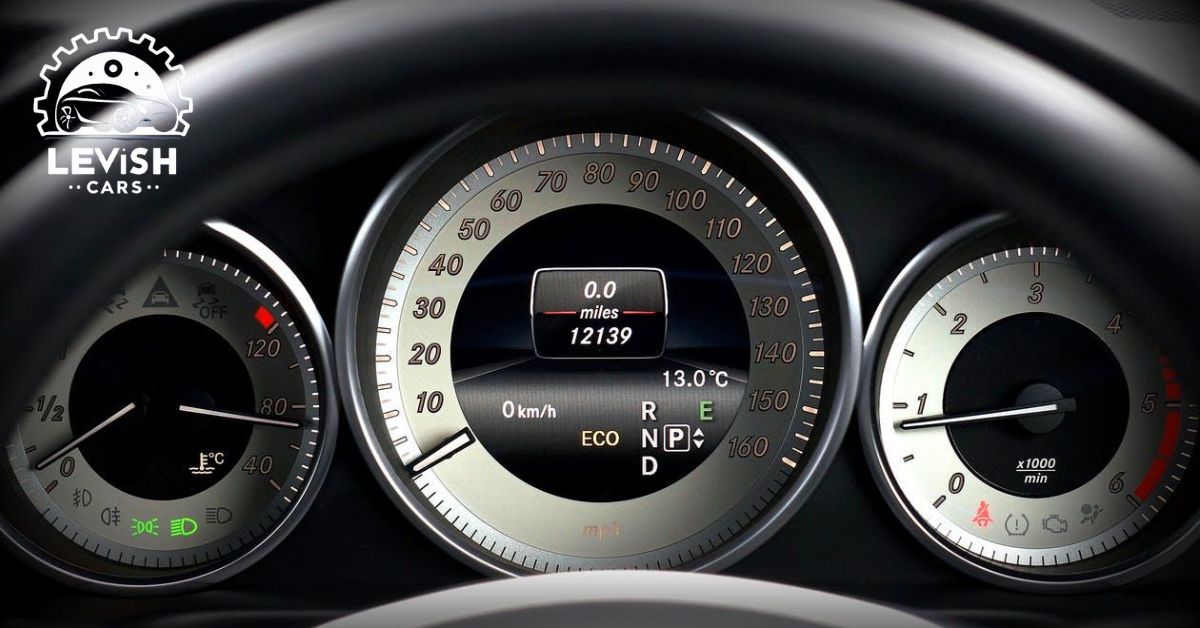A car’s temperature gauge shows the engine’s internal temperature. It lets you monitor the vehicle to avoid overheating. Sometimes the gauge can get stuck and show the wrong reading.
Resetting the temperature gauge is a quick fix to make it show the right level again. All you need to do is disconnect and reconnect the gauge sensor wiring under the hood. This resets the gauge and recalibrates it to the engine’s actual temperature.
It’s a basic procedure you can do yourself in just a few minutes. Resetting the gauge ensures it works properly to prevent engine damage from overheating.
Understanding Temperature Gauges And Their Importance
Cars have temperature gauges on the dashboard. This shows how hot the engine is while driving. The gauge has a needle that points to different temperatures. When the engine is cold, the needle points to C for cold. As the engine warms up, the needle moves towards H for hot.
The halfway point is normal. This means the engine is at regular operating temperature. It should stay around this mark while driving. If the needle goes above halfway near H, it means the engine is overheating. This is dangerous for the car.
When a gauge shows overheating, you should stop the car. Let the engine cool off for some time. Low coolant, fan issues, or thermostat problems can cause overheating. It needs to be fixed before driving more.
Checking the temperature gauge is important while driving. It helps see if the engine is acting normal. Overheating can seriously damage components in the engine. Watching the gauge can prevent expensive repairs. A working temperature gauge is vital for monitoring your car’s health.
Signs Of A Faulty Temperature Gauge
A temperature gauge shows if a car’s engine is overheating. It has an indicator needle that points to different temperatures. When the gauge is working right, the needle stays around the middle. This means normal engine temperature.
A faulty gauge may not show the real temperature. The needle might stay stuck in one spot. Or the reading could be totally wrong. For example, the needle points to cold even after driving for a while.
Other signs of a bad gauge include the needle moving erratically. It may jump around between hot and cold. Or the indicator light could come on for overheating even if the gauge shows normal.
If you notice these issues, the temperature gauge likely needs repair. A faulty one puts your engine at risk because you do not know the real operating temperature. Getting your gauge fixed or replaced is important to prevent engine damage from unseen overheating. A working gauge helps keep your car safe.
Checking The Coolant Level And Radiator

The cooling system keeps a car’s engine from overheating. Coolant fluid carries heat away from the engine. The radiator cools the hot coolant before sending it back.
It’s important to check the coolant level regularly. Remove the coolant reservoir cap and look at the fluid level when the engine is cold. The coolant should be filled between the “Full” and “Low” lines on the reservoir.
If the level is low, add the recommended coolant type to the reservoir. Never open the radiator cap when the engine is hot – escaping steam can badly burn you.
Also inspect the plastic radiator tanks and metal hoses for any leaks. Look for wet spots that indicate coolant is escaping the system. Catching leaks early prevents running low on coolant, which can lead to overheating. Monitoring both coolant level and your radiator condition is vital for engine health.
Identifying And Troubleshooting Temperature Gauge Errors
The temperature gauge shows if your engine is overheating. If it acts strange, the gauge may be faulty. A sign of issues is the needle not moving from cold after driving awhile. Or it may constantly swing between hot and cold.
Stuck gauges or unusual readings mean the gauge is broken. Start troubleshooting by checking coolant level and your radiator cap. Low fluid or leaks can affect the gauge reading. Also inspect the gauge sensor on the engine. Make sure it’s connected tightly.
If those items check out, the gauge itself probably went bad. Simple mechanical gauges have a broken internal spring. Electrical gauges have wiring or screen display problems. Replacing the faulty gauge will fix inaccurate readings.
As a temporary fix, watch your “hot” warning light instead. But get your temperature gauge fixed soon. Relying solely on the light is risky since it only comes on at critical overheating. Having an accurate gauge is vital to catch rising temperatures early and prevent engine damage.
Resetting The Temperature Gauge
Sometimes a temperature gauge gets stuck and doesn’t show the right reading. To fix it, you need to reset the gauge so it recalibrates. First turn off the engine and locate the wiring to the gauge sensor. Unplug the sensor connection for about a minute.
This resets the gauge. Then reconnect the sensor plug. Start the car and let the engine run until fully warmed up. The gauge needle should now move and show a normal operating temperature again. Resetting the connection clears any errors and makes the gauge work properly once more.
Seeking Professional Assistance
| When to Seek Professional Help | |
| Unusual Symptoms | Unusual noises or vibrations |
| Warning lights on the dashboard | |
| Difficulty starting the vehicle | |
| Regular Maintenance | Following the manufacturer’s service schedule |
| Routine check-ups and preventive maintenance | |
| Signs of Performance Issues | Decreased performance or efficiency |
| Fluid leaks under the car | |
| Brake Issues | Brakes not functioning properly |
| Spongy or unresponsive brake pedal |
| Finding a Qualified Professional | |
| Certifications and Licenses | Check for relevant certifications (e.g., ASE certification for automotive technicians) |
| Online Reviews | Read reviews on platforms like Google, Yelp, or automotive forums |
| Recommendations | – Ask friends, family, or coworkers for recommendations |
| Experience and Specialization | Inquire about the technician’s experience and whether they specialize in certain types of repairs |
| Quality Parts | Ensure the use of original equipment manufacturer (OEM) or high-quality aftermarket parts |
| Written Estimates | Obtain written estimates for labor and parts before authorizing any repairs |
| Warranty Coverage | Check if the repair shop provides a warranty on their work |
Preventive Measures To Maintain Optimal Engine Temperature

The engine in a car runs best at a normal operating temperature. There are some easy things drivers can do to keep the engine from overheating or running too cold.
Check the coolant level often. Add more coolant if it is low. This helps the cooling system work right. Watch for leaks that could lead to low coolant. Getting oil changes on schedule keeps the oil clean. Dirty oil can cause higher engine temperatures.
Replace the thermostat if the engine is running hotter than normal. A good thermostat opens to lower temperature at the right time. Taking these basic steps will help maintain the optimal temperature range for your engine.
Frequently Asked Questions
How Do You Reset An Engine Temp Sensor?
To reset an engine temp sensor, disconnect the vehicle’s battery for a few minutes, then reconnect it.
Why Is My Car Temperature Gauge Wrong?
If your car temperature gauge is wrong, it may be due to a faulty sensor or a cooling system issue; consult a mechanic for diagnosis and repair.
How Do You Fix A Temperature Gauge On A Car?
Fix a temperature gauge on a car by addressing sensor malfunctions, checking coolant levels, or repairing any electrical issues related to the gauge.
How Do You Reset The Outside Temperature Gauge On A Car?
Reset the outside temperature gauge on a car by turning the ignition off and on, or refer to the vehicle’s manual for specific instructions.
Final Thoughts
A temperature gauge is important for monitoring engine heat. But sometimes the gauge can get stuck and give inaccurate readings. To fix this, you need to reset the gauge so it works properly again.
Resetting a faulty temperature gauge is easy to do yourself. Just locate the wiring connector for the gauge sensor under the hood. Unplug it for a minute to reset the gauge. Then reconnect everything and let the engine fully warm up.
This recalibrates the gauge to show the true operating temperature again. Resetting the gauge takes just a few minutes. It can save expensive repairs by allowing you to spot dangerous overheating conditions early.
How To Trick A Mass Air Flow Sensor?

Hey there! I have 5 years of experienced repairing all makes and models. Specializes in engine diagnostics, brake repair, electrical systems, and teaching DIY maintenance tips. Passionate about keeping cars running safely.








